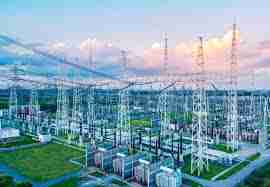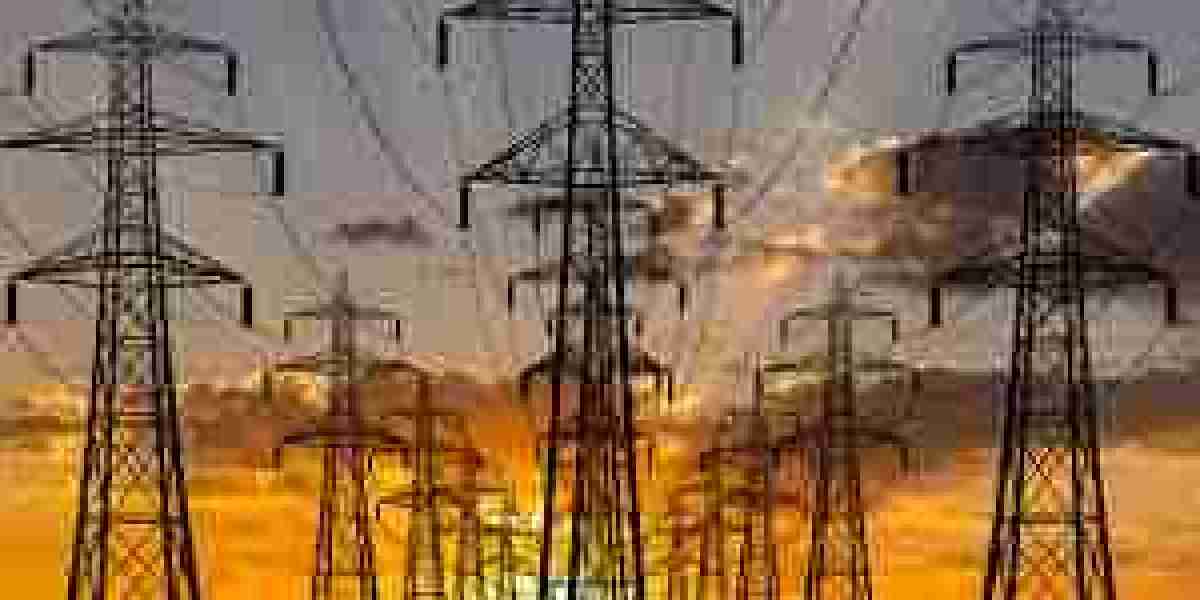Electricity transmission infrastructure is at the heart of modern energy distribution, ensuring that electricity generated in power plants reaches homes, businesses, and industries reliably. As demand for electricity continues to rise globally, driven by population growth and the increasing shift towards renewable energy, the need for robust, efficient, and flexible transmission infrastructure has never been more critical. To support this infrastructure, a wide array of services are available that ensure smooth operations, sustainability, and enhanced performance. This article explores the different services within the electricity transmission infrastructure market and their significance.

1. Transmission System Design and Engineering Services
Designing a transmission network is a complex, multi-step process requiring expert knowledge of electrical engineering, geography, and regulatory requirements. Transmission system design services focus on the planning, engineering, and designing of new infrastructure or the enhancement of existing systems. These services encompass a wide range of activities, including route planning, electrical load forecasting, grid topology design, and environmental impact assessments.
Engineers and designers work to determine the most efficient routes for power lines, ensure that the electrical systems are compatible with local grid conditions, and optimize the capacity of transmission lines to meet future demands. These services are crucial in ensuring that electricity transmission systems are designed to handle the expected load, integrate renewable energy sources, and comply with environmental and regulatory standards.
2. Construction and Installation Services
Construction and installation services are integral to the establishment of new electricity transmission networks or the expansion of existing ones. These services include the physical construction of power lines, substations, transformers, and other components of the transmission system. Specialized construction companies handle the groundwork, erecting transmission towers, laying underground cables, and installing electrical equipment necessary for the efficient transmission of electricity.
Installation services also involve the integration of modern technologies, such as sensors, communication systems, and protection mechanisms, to ensure that transmission networks can operate optimally and safely. As the shift toward renewable energy increases, construction and installation services are also focused on building infrastructure that can efficiently integrate renewable sources, such as wind or solar, into the grid.
3. Maintenance and Inspection Services
Once the transmission infrastructure is up and running, continuous maintenance and inspection are essential to ensure its reliability and longevity. Maintenance services for electricity transmission infrastructure cover routine inspections, repairs, and preventive maintenance to detect and address potential issues before they lead to system failures or power outages.
Inspection services involve the use of advanced technologies, including drones, helicopters, and robotics, to perform detailed inspections of power lines, substations, and other components. These inspections allow for the identification of wear and tear, vegetation encroachment, or faults in equipment. Predictive maintenance tools that analyze real-time data from sensors in the field are also becoming increasingly popular, enabling operators to identify potential failures before they occur.
Regular maintenance and inspection help to reduce downtime, extend the lifespan of transmission assets, and enhance the overall safety of the grid. The growing complexity of modern grids, particularly with the integration of renewable energy sources, has made reliable maintenance services even more critical.
4. Grid Management and Optimization Services
Effective grid management is vital to ensure that electricity is transmitted efficiently and reliably from power plants to consumers. Grid management services include monitoring the real-time performance of the transmission network, optimizing energy flows, and balancing supply and demand across the grid.
Advanced software and automation tools are used to optimize grid operations by improving the coordination between power generation and consumption. Grid operators rely on real-time data, forecasting models, and predictive analytics to ensure that the grid is functioning efficiently and that power is being transmitted where it is needed most. As electricity grids become more complex with the integration of renewable energy, these services play a crucial role in minimizing losses and enhancing operational efficiency.
Optimization services also extend to improving the power factor of the transmission network, ensuring that the power being transmitted is used effectively without unnecessary waste. This, in turn, helps utilities save on operational costs and reduce the environmental impact of power generation.
5. Emergency and Fault Management Services
Power outages and faults in the transmission system can occur for various reasons, including equipment failure, extreme weather events, or accidents. Emergency and fault management services are designed to quickly detect, diagnose, and repair faults to minimize disruption and restore service as quickly as possible.
These services are essential for ensuring the reliability of the transmission network, particularly in areas prone to extreme weather or natural disasters. Teams equipped with specialized tools, including mobile units and portable generators, can quickly deploy to affected areas, identify the cause of the fault, and make necessary repairs or replacements. In addition to physical repairs, fault management services also involve diagnosing underlying issues in the network, such as overloads or faults in protection systems, to prevent future failures.
Moreover, emergency services include disaster recovery planning, ensuring that systems are designed to be resilient and can recover quickly after major disruptions.
6. Consulting and Regulatory Compliance Services
Navigating the complex regulatory and environmental landscape is another vital service in the electricity transmission infrastructure market. Consulting services in the transmission sector help utilities and energy providers navigate the many regulatory requirements they must meet when developing or expanding transmission networks. These services include assistance with securing permits, environmental assessments, and compliance with local, national, and international standards.
Transmission infrastructure must adhere to stringent regulations related to environmental protection, grid safety, and security. Consultants work closely with utility companies and government agencies to ensure compliance with these regulations, often helping to draft reports, coordinate with stakeholders, and design systems that minimize environmental impact. As more countries emphasize sustainability and carbon reduction, consulting services are playing an increasingly important role in guiding the industry toward more environmentally friendly and energy-efficient practices.
7. Training and Skill Development Services
As the electricity transmission sector becomes more technologically advanced, there is a growing need for highly trained personnel to operate, maintain, and manage transmission infrastructure. Training and skill development services are essential in ensuring that the workforce has the necessary expertise to handle complex tasks such as grid management, fault detection, and the maintenance of advanced transmission technologies.
Training programs often cover a wide range of skills, including electrical engineering, safety protocols, and the use of modern diagnostic and monitoring equipment. These services are critical to ensuring the safety of workers and the continued reliability of the transmission grid.
Conclusion
The electricity transmission infrastructure market relies on a broad array of services that ensure the successful operation, maintenance, and optimization of power transmission networks. From design and engineering to maintenance, grid management, emergency response, and regulatory compliance, these services are vital to the ongoing development of robust, sustainable, and efficient electricity grids. As the energy landscape continues to evolve, particularly with the increasing integration of renewable energy, these services will play an even more critical role in shaping the future of electricity transmission infrastructure.




